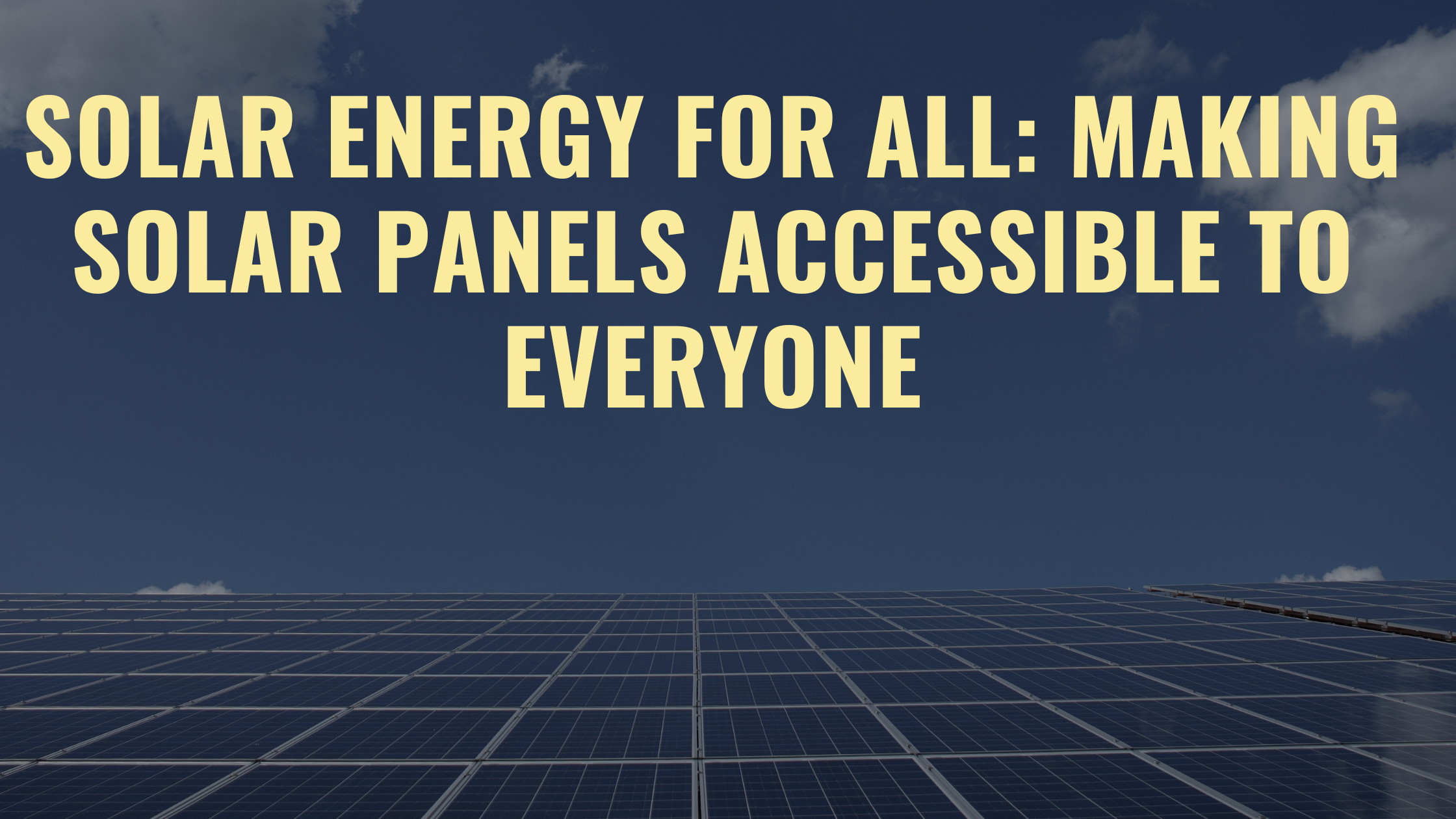In the pursuit of a sustainable future, solar energy stands out as a beacon of hope. With its abundant, clean, and renewable nature, solar power has the potential to revolutionize the global energy landscape. However, for this revolution to truly take hold, it is imperative that solar panels become accessible to everyone, regardless of economic status or geographic location. In this blog, we explore the challenges and opportunities in making solar energy a truly inclusive and equitable resource.
The Promise of Solar Energy
Solar energy holds immense promise as a clean and renewable source of power. Unlike fossil fuels, which contribute to air pollution, greenhouse gas emissions, and climate change, solar power harnesses the abundant energy of the sun without producing harmful byproducts. This makes it a critical component of efforts to mitigate the impacts of climate change and transition to a more sustainable energy system.
Furthermore, solar energy offers numerous benefits beyond environmental sustainability. It provides energy independence, reduces reliance on volatile fossil fuel markets, creates jobs in the renewable energy sector, and stimulates economic growth. From individual homeowners to large-scale utilities, solar power has the potential to transform the way we generate and consume electricity.
Barriers to Access solar panels
Despite its promise, widespread adoption of solar energy remains hindered by various barriers, chief among them being accessibility. Historically, the high upfront costs of solar panel installation have been a significant deterrent for many individuals and communities, particularly those with limited financial resources. Additionally, access to financing options and incentives has been uneven, further exacerbating disparities in solar adoption.
Geographic and structural factors also play a role in limiting access to solar energy. In regions with limited sunlight or restrictive zoning regulations, installing solar panels may be less feasible or practical. Furthermore, renters and residents of multi-unit buildings may face additional challenges in installing solar panels due to ownership structures or lease agreements.
Additionally, there is a lack of awareness and education about the benefits of solar energy among certain communities, further contributing to disparities in adoption. This is particularly true in underserved and marginalized communities, where access to information and resources may be limited.
Addressing the Equity Gap
Addressing the equity gap in solar energy access requires a multifaceted approach that addresses the underlying barriers and challenges. One key strategy is to expand access to financing options and incentives, making solar energy more affordable and accessible to low- and moderate-income households. This can be achieved through targeted government programs, incentives for solar developers to serve underserved communities, and innovative financing models such as community solar initiatives and solar leasing programs.
Education and outreach efforts are also critical in raising awareness about the benefits of solar energy and dispelling misconceptions. This includes providing information about available incentives and financing options, as well as highlighting the environmental, economic, and social benefits of solar power. Community-based organizations, local governments, and advocacy groups can play a pivotal role in engaging and empowering communities to embrace solar energy.
Furthermore, policies and regulations should be revised to remove barriers and promote solar energy deployment in underserved communities. This may include streamlining permitting processes, incentivizing solar installations in affordable housing developments, and implementing equitable net metering policies that ensure fair compensation for solar energy generated and fed back into the grid.
Innovations in Solar Technology
Advancements in solar technology are also contributing to making solar energy more accessible to everyone. Improvements in solar panel efficiency, durability, and affordability are driving down the cost of solar installations and expanding the range of applications. Additionally, innovations in energy storage solutions, such as battery storage, are addressing the intermittency of solar power and enabling greater energy independence.
Moreover, decentralized solar solutions, such as off-grid and mini-grid systems, are providing access to electricity in remote and underserved areas where traditional grid infrastructure is lacking. These systems empower communities to generate their own clean energy and improve energy access, thereby driving socioeconomic development and resilience.
Conclusion
Solar energy has the potential to be a powerful force for positive change, but realizing this potential requires ensuring that it is accessible to everyone. By addressing the barriers to access, promoting equity and inclusion, and leveraging innovations in technology and policy, we can make solar energy a reality for all. Together, we can harness the power of the sun to build a more sustainable, equitable, and prosperous future for generations to come.




